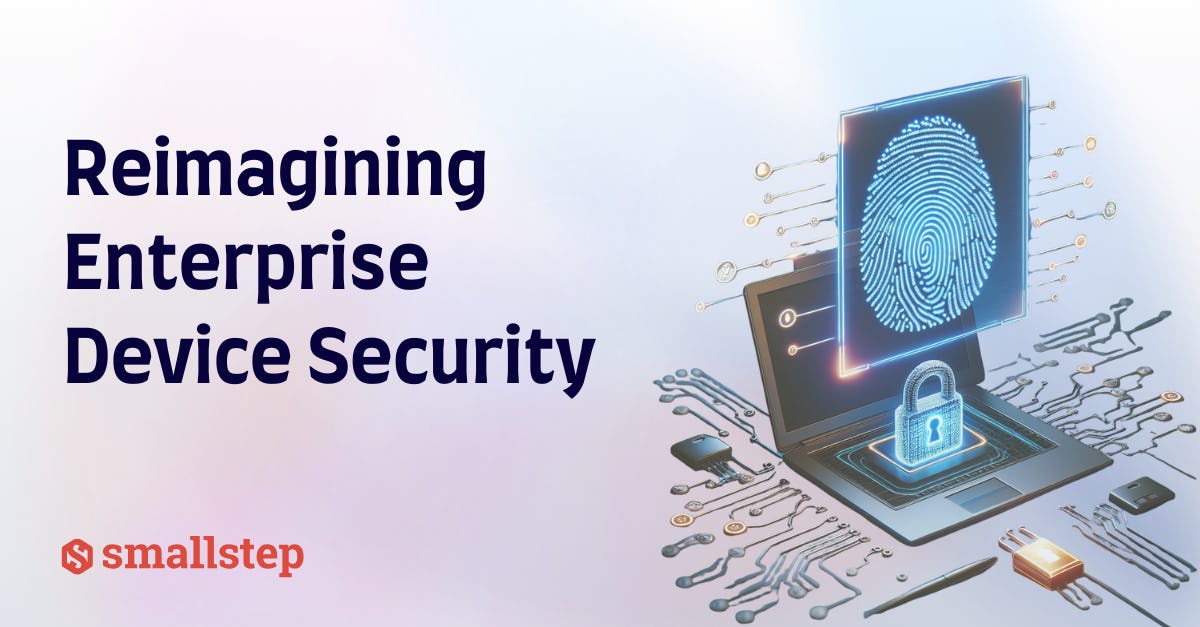Securing the Endpoint: Why Client Platform Engineers Need Strong Device Identity

Ted Malone
The role of the Client Platform Engineer (CPE) has emerged as a critical function in modern technology organizations. Tasked with the responsibility of deploying, managing, securing, and decommissioning a growing number of endpoints at enterprise scale, CPEs are at the forefront of ensuring a productive and secure computing environment for employees. These engineers, often with a background in system administration, security, and software engineering, are constantly seeking solutions to the ever-evolving challenges of endpoint management in an era of remote work, diverse devices, and sophisticated cyber threats.
One of the fundamental pillars of a robust endpoint security strategy is device identity. Ensuring that only known, healthy, and compliant devices can access resources and interact with services is paramount in a zero-trust architecture and broader cybersecurity frameworks emphasized by NIST and CISA. This is where solutions like the Device Identity Platform™ become incredibly appealing.
CPEs are deeply concerned with mitigating a range of security threats stemming from weak, shared, and poorly managed credentials, as well as unauthorized access from untrusted or unmanaged devices. Our approach of providing a hardware-backed, certificate-based identity for every trusted device – what we term “high assurance device identity” – directly addresses these core concerns and offers the “strongest possible guarantee”.
Here’s a few reasons why Smallstep’s platform may resonate with the objectives and responsibilities of Client Platform Engineers today:
- Strong Authentication Against Phishing and Credential Stuffing: CPEs are on the front lines battling common enterprise threats like phishing and credential stuffing. Device identity acts as a robust authentication factor that can be layered into existing workflows. By raising the bar for attackers to a full device compromise, it significantly reduces the risk associated with compromised user credentials. Furthermore, the transparent nature of device authentication can help mitigate MFA fatigue, a growing concern highlighted by breaches like the Uber data breach where MFA was bypassed.
- Preventing Unauthorized Access from Untrusted Devices (Insider Threats): A significant challenge for CPEs is preventing unauthorized access from personal devices, a common vector for insider threats. Solutions like EDR and antivirus become less effective if employees can easily pivot from managed corporate devices to personal ones. Smallstep’s Device Identity Platform™ can enforce policies that strictly control which devices can access corporate resources, effectively preventing scenarios like the LastPass breach that originated from a compromised personal server. This also directly addresses regulatory and compliance risks, such as those seen with GDPR and HIPAA violations when organizations fail to prevent access to sensitive data from personal devices, as illustrated by the fines levied against BUPA Insurance, OHSU, and Centro Hospitalar Barreiro Montijo.
- Mitigating APTs and Lateral Movement: Sophisticated adversaries often rely on credential exfiltration for lateral movement within a network. By binding credentials to hardware, Smallstep’s “high assurance” device identity makes credential theft significantly less useful. Attackers are forced to compromise and maintain a presence on specific devices, making lateral movement and attack escalation more complex and increasing the chances of detection. This aligns with the CPE’s goal of building resilient systems against advanced persistent threats, as seen in the context of attacks like SolarWinds and Operation Aurora.
- Enhanced Resilience Against Identity Provider Compromise: CPEs understand the risk associated with relying solely on user identity infrastructure. Device identity operates independently, meaning an attacker would need to compromise both the user and the device simultaneously to gain access. This added layer of security strengthens the overall identity posture of the organization, providing a valuable safeguard against identity provider breaches, such as those experienced by Okta.
- Securing the Device Supply Chain: For CPEs responsible for managing large fleets of devices, ensuring the integrity of the supply chain is a growing concern. Smallstep’s hardware-backed credentials allow for secure identification of devices right from the manufacturer, enabling automated inventory management and mitigating the risk of supply chain tampering.
- Disrupting Ransomware and Data Exfiltration: Ransomware actors commonly exploit stolen credentials and lateral movement techniques. By making credential theft less effective for lateral movement (e.g., Pass-the-Hash), the Device Identity Platform™ can help disrupt ransomware attacks, as highlighted by the Colonial Pipeline incident where compromised VPN credentials provided the initial foothold.
- Preventing MiTM and Evil Twin Attacks: CPEs are tasked with ensuring secure network connectivity. Leveraging device identity for Wi-Fi and VPN authentication (e.g., certificate-based 802.1x and EAP-TLS) effectively mitigates “rogue access point” or “evil twin” attacks by requiring device authentication rather than just user credentials.
In essence, Smallstep’s Device Identity Platform™ offers Client Platform Engineers a powerful toolset to enforce a security-first approach to endpoint management. By focusing on strong, hardware-backed, certificate-based identities, it aligns perfectly with the CPE’s responsibilities of automating security controls, implementing Zero Trust principles, and ultimately providing a secure and productive environment for their organization’s end users. As the landscape of cyber threats continues to evolve, solutions that provide such a strong foundation of trust at the device level will undoubtedly be highly valued by Client Platform Engineers striving to secure the modern enterprise endpoint.
Ted Malone is a seasoned Technology Executive with over 20 years of success in guiding high-growth organizations. From leadership roles at industry giants like Amazon, TiVo, Ericsson, and Microsoft to his current position at Smallstep, Ted consistently demonstrates prowess in strategic business development, product management, and corporate partnerships. At Smallstep, he delves into DevSecOps, product strategy, and general management.


